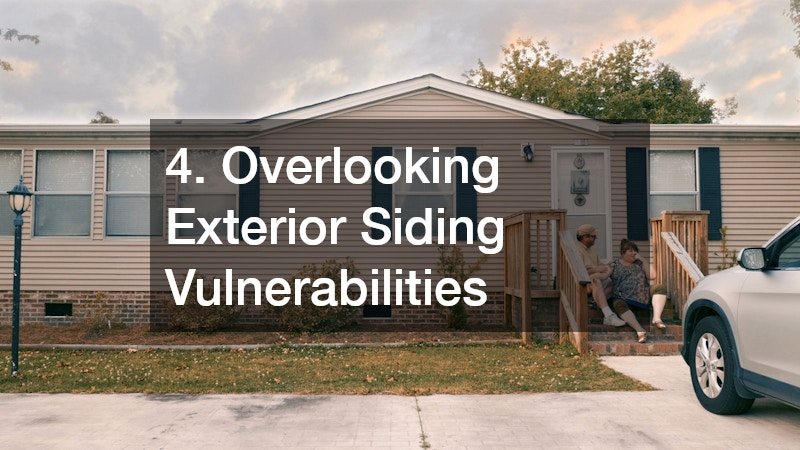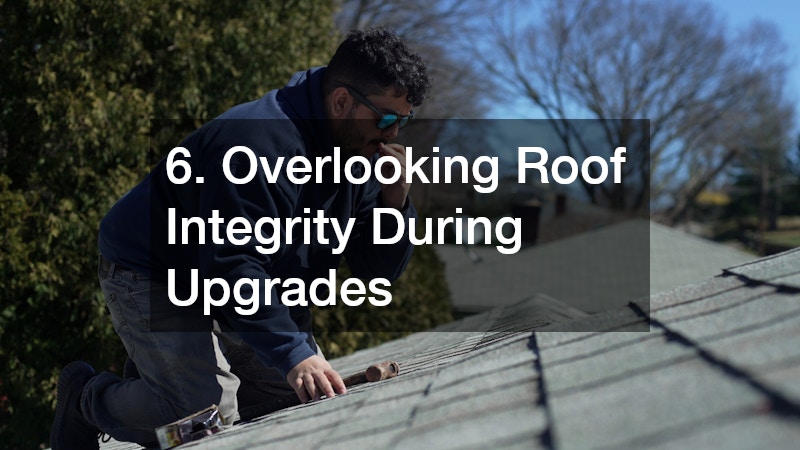Renovating a home brings excitement, new design opportunities, and improved comfort. But beneath the surface of new flooring, fresh paint, and upgraded features, homeowners often overlook how construction changes can unintentionally invite pests inside. Even small gaps, shifts in materials, or overlooked repairs can create perfect entry points for insects, rodents, and other unwelcome guests. Understanding the hidden risks behind common renovation practices helps homeowners safeguard their homes from infestations before they start.
Many pest issues happen gradually and silently, especially when construction disrupts natural barriers or exposes unfinished spaces. Renovation projects that involve structural changes, exterior upgrades, or landscaping adjustments require careful oversight to avoid opening new pathways for pests. Even interior redesigns can create unsealed gaps, concealed voids, or areas where moisture accumulates—conditions pests seek out.
This guide highlights ten renovation mistakes that frequently create pest problems and offers practical ways to avoid them. By planning ahead, coordinating inspections, and incorporating sealing and protective measures into the project, homeowners can maintain both the beauty of their renovations and the long-term health of their home.
1. Leaving Gaps and Entry Points After Construction
One of the most common renovation mistakes is overlooking small cracks, gaps, and unsealed openings around windows, doors, plumbing penetrations, and utility lines. These tiny spaces may seem insignificant, but they can serve as major access points for pests. Many homeowners only notice issues once signs of pests begin to appear, and by then, it’s often too late.
During and after renovation work, it’s crucial to conduct detailed inspections around trim, baseboards, and wall openings. Construction can shift frames, expose older gaps, or create new ones that go unnoticed. Sealing these openings prevents pests from using them as highways into the home.
When pest problems arise in these newly created gaps, homeowners often contact exterminators for a solution. Their expertise becomes essential when pests exploit construction-related openings that were previously unnoticed. By identifying vulnerable spots, these professionals can help maintain a pest-free environment after a renovation project.
Local pest control companies are another valuable resource for identifying post-renovation vulnerabilities. They can inspect attic spaces, crawl areas, and foundation edges to detect cracks or gaps that general contractors may overlook. Incorporating their guidance into a renovation plan helps ensure long-term pest prevention.
2. Ignoring Damaged or Poorly Maintained Gutters

Renovations may focus heavily on interior improvements while exterior maintenance is neglected. But failing to maintain key components like gutters can create moisture problems that attract pests. Standing water, leaf buildup, and overflow can create ideal breeding conditions for insects and can soften wood, making it easier for pests to burrow inside.
When homeowners notice water pooling around the home after storms, they often turn to gutter repair services to restore proper drainage. These services ensure water flows away from the home instead of saturating vulnerable materials. Poor drainage is one of the leading causes of moisture-related pest issues near siding, roofing, and foundations.
In addition to cleaning and fixing gutters, homeowners should consider the overall drainage efficiency around the home. After renovations that affect rooflines or landscaping, water flow patterns often change. If those changes are not accounted for, moisture can accumulate in areas pests find appealing. Proper water management plays a critical role in preventing infestations.
Maintaining clean gutters helps reduce rot, mold, and collected debris—all of which attract pests seeking food or nesting sites. By addressing exterior maintenance during renovations, homeowners reinforce long-term pest prevention strategies.
3. Adding Exterior Décor Without Proper Barriers
Decorative additions, especially those placed along the outside of the home, can accidentally attract pests if not installed carefully. Flower boxes, for example, bring beauty to windows and exterior walls, but they also introduce soil, moisture, and organic matter that insects and rodents love. If mounted improperly or allowed to accumulate water, they may help pests get closer to entry points.
Homeowners often incorporate flower boxes during renovations to enhance curb appeal. But these boxes can trap moisture along siding or window sills, leading to rot and softening materials that pests can chew through. Regular inspection and spacing between the box and the exterior wall reduce these risks.
Flower boxes should include drainage systems to minimize standing water. Pests are naturally drawn to moisture, so eliminating unnecessary water accumulation is key. Choosing durable materials and lining the interior of the boxes can also help discourage pests from nesting.
Proper placement and sealing around hardware help ensure these decorative features do not create vulnerabilities. With intentional planning, homeowners can enjoy outdoor décor while avoiding pest-friendly conditions.
4. Overlooking Exterior Siding Vulnerabilities

During renovation projects, siding becomes a focal point for both aesthetic enhancement and structural protection. However, failing to evaluate long-term durability can lead to hidden pest access points. Changes to exterior walls often expose weaknesses that pests can exploit.
Many homeowners work with local siding companies during renovations to replace or repair sections of siding. These professionals understand how pests exploit cracks, loose boards, or warped materials. Their expertise helps ensure siding remains sealed tightly against moisture and pests.
During construction, it’s easy to overlook areas around vents, window frames, and corners where siding may shift or detach. Proper installation and follow-up inspections ensure these areas stay secure. Even small separations create pathways for ants, beetles, spiders, and even rodents.
Seasonal maintenance after the renovation is equally important. High winds, temperature changes, and storms can loosen panels over time. A well-maintained exterior barrier significantly reduces pest activity in walls and insulation.
5. Changing Property Lines Without Pest-Proof Barriers
Renovation projects often expand into outdoor areas, including new fences or redesigned boundaries. However, ignoring pest-proofing during these upgrades can result in unwanted visitors entering the yard and eventually the home.
Homeowners often consult fence companies when installing new barriers. While fences improve privacy, they may also create discreet hiding spots for pests. Improper installation can leave gaps along the base or between panels, providing easy access for small animals.
Yard redesigns may also disturb soil and vegetation, pushing pests closer to the home. Ensuring fences are installed securely and with proper ground contact helps keep pests outside the perimeter.
Fences should be inspected regularly for rot, warping, or soil erosion beneath the panels. These conditions provide opportunities for pests to enter and nest near foundations, decks, or sheds. Pest-proof fencing is an essential step in comprehensive renovation planning.
6. Overlooking Roof Integrity During Upgrades

Roof-related issues are among the leading causes of pest intrusions. Renovations often involve new skylights, vent installations, or attic reconfigurations, and these changes can alter the roof’s protective structure. Even small mistakes can create entry points for pests.
Homeowners frequently rely on local roofers to ensure roofing projects are completed correctly. Their expertise is critical because pests often exploit loose shingles, exposed underlayment, and gaps around flashing. When roofing elements are not sealed tightly after renovations, pests quickly find their way inside.
Seasonal roof inspections provide an added layer of protection. Renovation work may unintentionally displace roofing materials, making follow-up inspections crucial. Professional guidance ensures that roofing integrity remains intact.
A well-maintained roof serves as the home’s first line of defense against weather and pests. Ensuring proper installation and long-term care prevents pests from entering attics, insulation, and upper wall cavities.
7. Ignoring Foundation Shifts During Renovations
Large-scale interior or exterior renovations often put added stress on the home’s structure. Construction vibrations, heavy materials, and moisture changes may affect the foundation. Even small cracks can create pathways for insects and rodents.
In such cases, homeowners often turn to foundation repairs to address structural weaknesses. These repairs seal cracks, reinforce the base of the home, and prevent pests from slipping into crawl spaces or basements. Prompt intervention ensures the home stays structurally sound and pest-resistant.
Renovation work that changes drainage patterns or increases soil pressure may also affect foundations. Water accumulation around the foundation creates ideal nesting environments. Proactive monitoring and sealing prevent pests from using foundation weaknesses to enter the home.
Maintaining a strong foundation ensures structural stability and minimizes pest intrusion risks for years to come.
8. Using the Wrong Landscaping Around the Home

Many renovation projects include outdoor redesigns, especially around the perimeter. However, choosing the wrong materials or placing plants too close to the home can attract pests. Moist soil, decaying mulch, and dense vegetation draw insects and rodents closer to walls and entry points.
Homeowners often install new landscape material during renovations. While these additions improve aesthetics, they may unintentionally create pest habitats. Organic mulches, in particular, hold moisture and attract pests unless properly maintained.
Creating proper spacing between landscaping and exterior walls reduces these risks. Keeping soil and mulch away from siding prevents rot and eliminates pest hiding spots. Incorporating gravel or stone around the base of the home is another effective option.
Selecting low-maintenance materials and maintaining proper airflow around exterior walls also help minimize infestations. Thoughtful landscaping supports long-term pest control.
9. Installing Doors Without Proper Sealing
Upgrading or adding new exterior access points during renovations can significantly improve both functionality and curb appeal. New doors not only modernize the look of a home but also enhance usability for everyday living. However, improper installation or overlooked details can create gaps around door frames, which pests can easily exploit. This is particularly common with sliding doors, patio entrances, and basement walkouts, where structural shifts or weather changes may open small, often unnoticed pathways.
When homeowners install a new patio door, precise sealing and alignment are essential. Misaligned frames or improperly attached weatherstripping create direct access for pests, particularly ants, spiders, and small rodents. Over time, settling of the foundation or seasonal temperature fluctuations can slightly shift the door frame, reducing the effectiveness of initial sealing. Performing regular inspections and making small adjustments ensures the protective barriers remain intact. Some homeowners also opt for additional threshold seals or exterior door sweeps, which provide an extra layer of defense against intruders.
Sliding mechanisms also shift with weather changes. If tracks become dirty or misaligned, pests may push through small openings around the frame. Maintaining these areas prevents intrusions. Consistent upkeep, including sealing, cleaning, and adjusting hardware, ensures doors maintain their protective barriers long after renovation work is complete.
10. Failing to Secure Storage Areas After Renovation
Renovation projects often require storing tools, materials, and household items in garages or sheds. These temporary storage areas can become long-term clutter zones if forgotten once the project is finished. When boxes, lumber, and unused supplies pile up, they create dark, quiet hiding places that pests love. Rodents, insects, and other unwelcome guests thrive in undisturbed spaces, especially when items remain stacked on the floor or pushed against walls.
Homeowners may upgrade overhead garage doors during renovations to improve insulation, security, and day-to-day functionality. While these upgrades are beneficial, even small gaps along the sides, top, or bottom can allow pests to squeeze through. Weather seals can wear quickly, and shifting temperatures may cause misalignment. Regular inspections and seasonal adjustments ensure the door closes tightly and maintains its protective barrier year-round.
Many homeowners also enlist garage door contractors to repair or upgrade older systems. These professionals understand the importance of proper installation techniques, calibrated tension, and frame alignment—all elements that reduce the risk of pest intrusion. When garage doors operate smoothly and sit flush with the ground, they significantly minimize openings that small animals might otherwise exploit.
Caring for storage areas means keeping them clean, dry, and organized to deter pest activity. Boxes should be elevated on shelves rather than left on the floor, and items should be stored in sealed containers rather than open bins. Clutter provides ideal nesting conditions, so routine cleaning helps eliminate hiding spots and makes it easier to detect early signs of pests. A well-maintained storage area supports both the safety and longevity of household belongings.
Pest prevention should be woven into every step of a renovation—from design to installation to long-term maintenance. This means sealing cracks, evaluating drainage, monitoring exterior structures, and ensuring new features are built with pest resistance in mind. Understanding how pests exploit construction changes empowers homeowners to implement stronger defenses and enjoy a healthier, safer, and more resilient home after remodeling.
